The Fairchild Republic A-10 Thunderbolt II, better known as the Warthog, is renowned for its durability – on the battlefield and as an institution. The Warthog, whether facing enemy fire abroad or budget cuts at home, just won’t die.
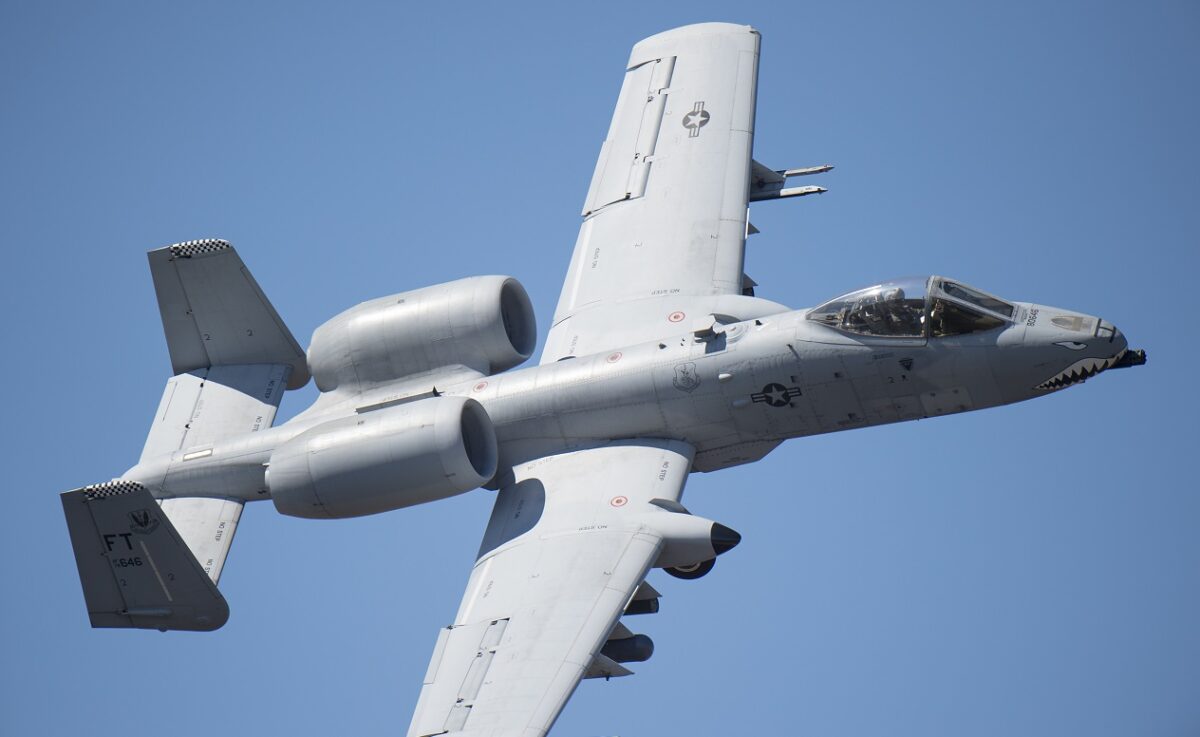
An A-10 Thunderbolt II flies over Grand Bay Bombing and Gunnery Range at Moody Air Force Base, Ga., Feb. 18, 2016. Multiple U.S. Air Force aircraft within Air Combat Command conducted joint aerial training that showcased the aircrafts tactical air and ground maneuvers, as well as its weapons capabilities. (U.S. Air Force photo by Staff Sgt. Brian J. Valencia/Released)
The A-10 Warthog Withstands Time in Service
The Warthog was developed to provide close air support – emphasis on close, meaning the A-10 is often coming into contact with the enemy. To withstand the enemy contact that providing close air support entails, the A-10 is a physically hardened airframe, capable of surviving under direct fire. Several features lend to the A-10’s survivability: The hydraulic flight systems are double-redundant – and if the hydraulic systems fail, a mechanical system serves as an extra contingency; the aircraft is also designed to stay airborne even if severely damaged, capable of flying with just one engine, one elevator, or with half of a tail or even half of a wing missing. Most planes cannot fly while missing half of a wing.
Several Innovative Design Features Help Ensure Survivability
To keep the pilot safe while under fire, the A-10’s cockpit is encased within a 1,200-pound titanium “bathtub.” The A-10’s bathtub can withstand direct hits from 23mm cannon fire and indirect hits from 57mm shells. The thickness of the bathtub varies from 0.5 to 1.5 inches to optimize placement. The armor, which comprises about six percent of the airframe’s total weight, also features a multi-layer nylon spall shield to further protect against shell fragments. The windscreen and canopy are rated to withstand small arms fire.
Particular attention was paid to the fuel system’s design; to reduce the prospect of damage, all four of the A-10’s fuel tanks are located near the airframe’s center while being kept from the fuselage itself. If a fuel line is damaged, the line self-seals. And if a tank is compromised, the system prevents fuel from flowing into the compromised tank. Should the A-10 lose all of its main fuel tanks, two self-sealing sump tanks offer enough fuel to fly another 230 miles of flight, providing a contingency.
Forward Airbase Compatible
Designed for the inconveniences of warfare, the A-10 can operate from forward airbases and partially prepared runways. In such environments the risk of foreign object damage to an aircraft’s engine are high. To mitigate risk, the A-10’s engines were placed in an unusual location: on the upper sides of the aircraft toward the rear of the fuselage, between the airframe’s wings and horizontal stabilizers. The location, higher than and behind the airframe’s wings, reduces the likelihood of ingesting foreign objects. Additionally, firewalls were installed to compartmentalize the engines from the rest of the airframe.
Advanced Weapons Give the Warthog an Edge
Despite the A-10’s unique survivability features, the jet is best known for its weaponry – specifically, the GAU-8, a 30x173mm, hydraulically driven rotary cannon capable of firing 3,900 rounds per minute. Basically, the A-10 was built around the GAU-8, a massive weapon that runs down the center of the fuselage, protruding slightly from the nose of the aircraft. The gun features a nearly six-foot-long ammunition drum that can hold up to 1,350 rounds of 30mm ammunition. The GAU-8 was designed for and is completely adept at destroying enemy tanks and armored vehicles.
In addition to the rotary cannon, the A-10 is armed with AGM-65 air-to-surface missiles. Obviously, the AGM-65 grants the A-10 a greater range than just the GAU-8. The A-10 can also carry cluster bombs, Hydra 70 rockets, GPS or laser-guided bombs, AGM-154s, and AIM-9 Sidewinders (for air-to-air interactions). The A-10 also typically carries an electronic countermeasures (ECM) pod.
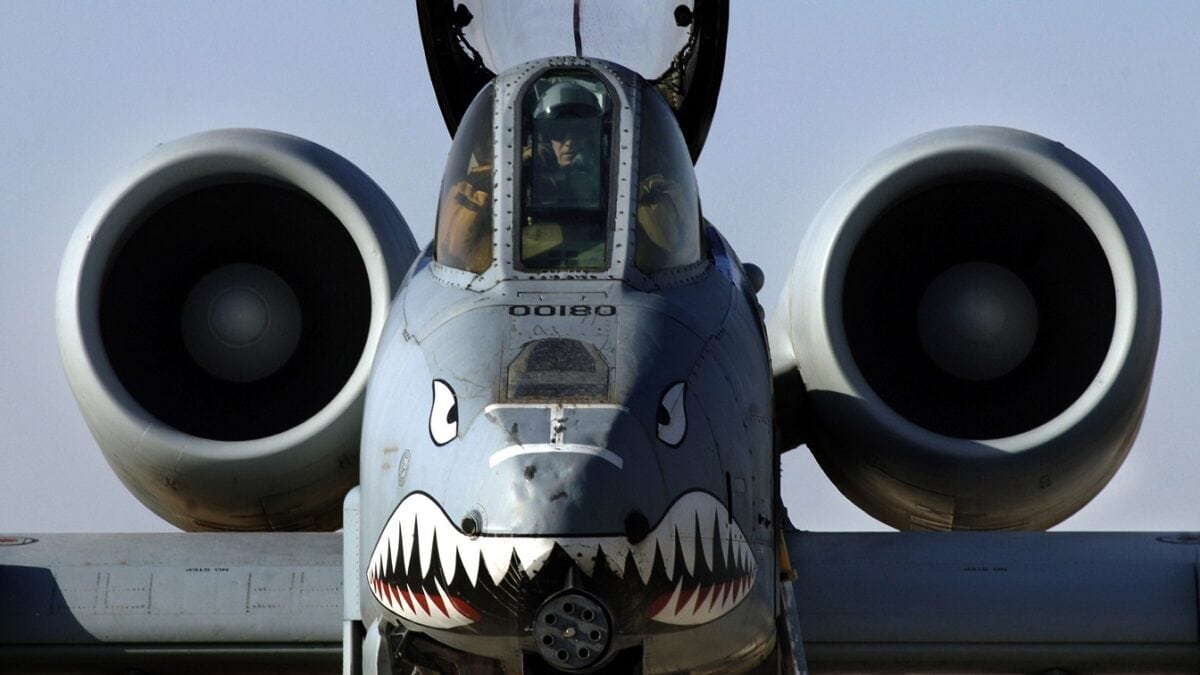
An A-10 Thunderbolt II takes off to provide close-air support to ground troops in Iraq April 25 from Al Asad Air Base, Iraq. The 438th Air Expeditionary Group A-10s perform 10 sorties daily, with 900 sorties in this last four months. (U.S. Air Force photo/Tech. Sgt. Cecilio M. Ricardo Jr.)

A-10 Warthog. Image Credit: Creative Commons.
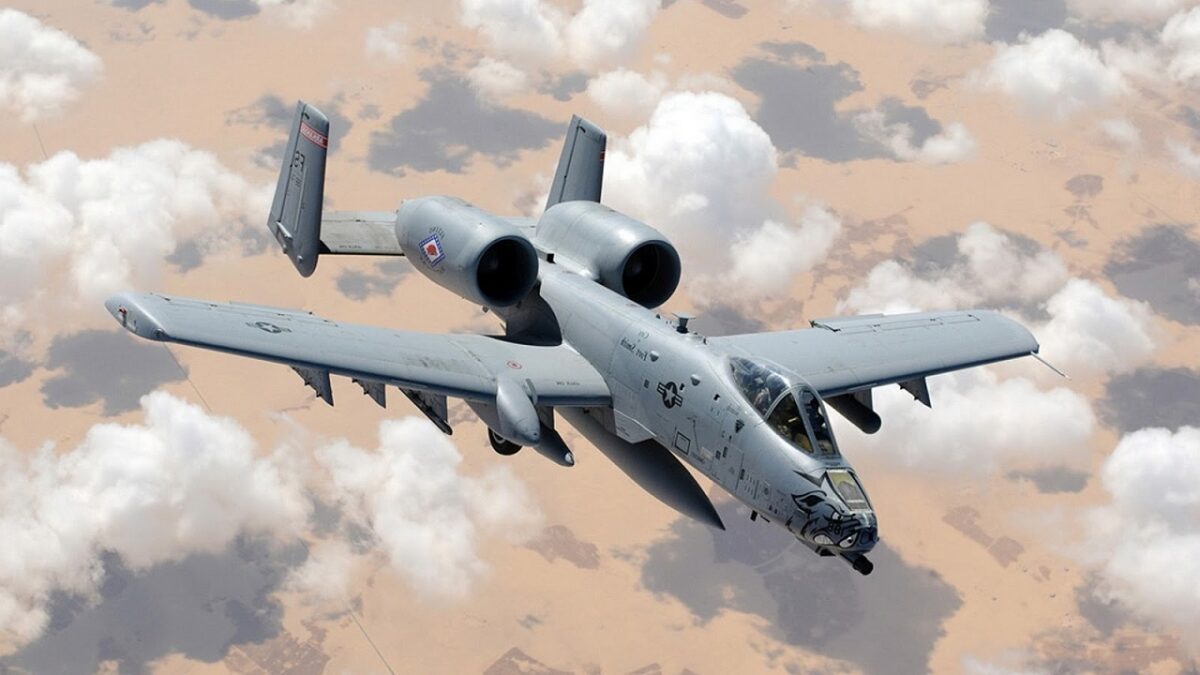
A-10 Warthog. Image Credit: Creative Commons.
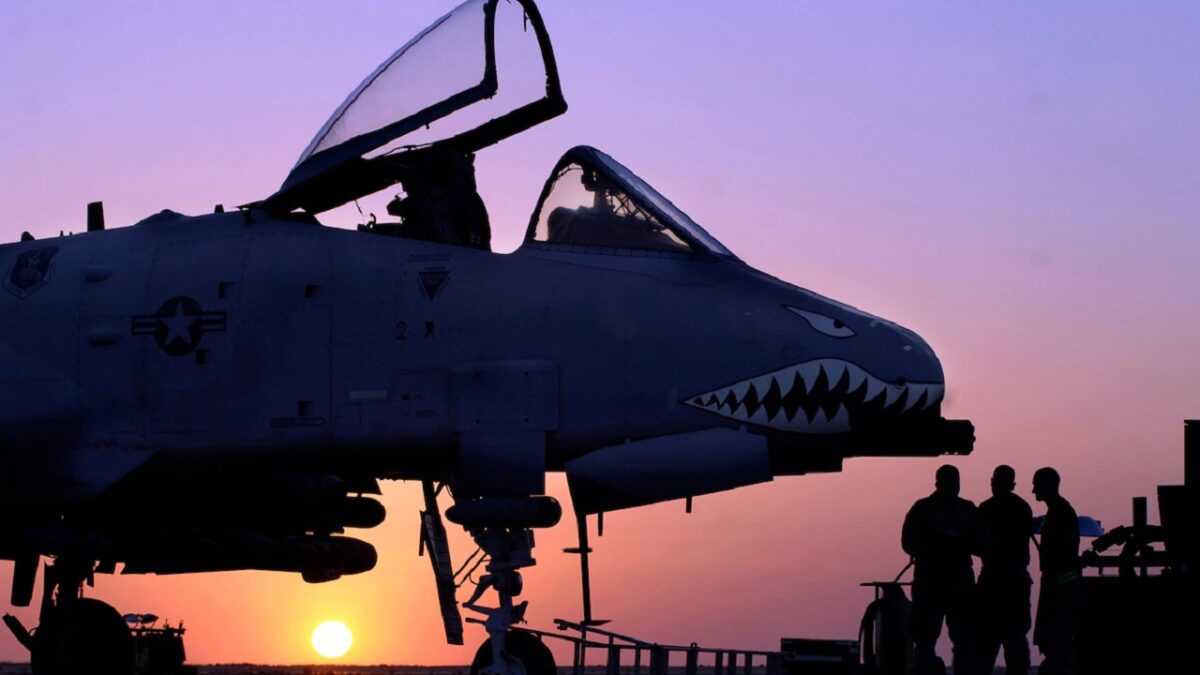
A-10 Warthog Sunset. Image Credit: Creative Commons.
Resilient in action, the A-10 is also resilient as an institution. First introduced to the U.S. Air Force in 1977, the A-10 has not been in production since 1984. Most airframes that exited production four decades ago off front-line service – but war planners have found continued use for the durable, tank-busting A-10.
The future of the A-10 program is a consuming debate that, to date, has always ended in the conclusion that the A-10 needs to stay in service. Part of the reason why the A-10 is able to stay relevant is that there is no better alternative; nothing can provide such close air support as effectively as the A-10 – and nothing can do so as cheaply.
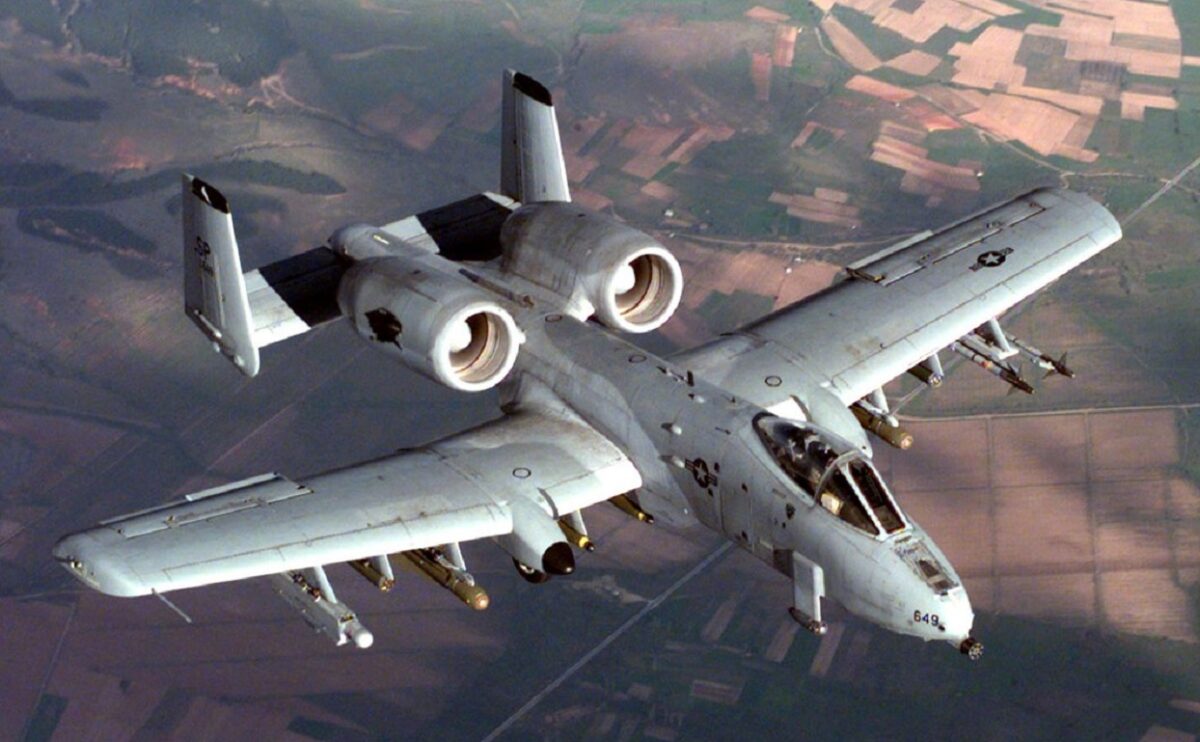
Image: Creative Commons.
The F-35 for example, which has been proposed as a replacement to the A-10 and in most conventional metrics is a much better aircraft, simply can’t perform the close air support role as well as the A-10. And of course, the F-35 costs significantly more – per unit and to maintain – and because of a more finicky maintenance schedule, would not be able to fly as frequently. With no replacement in development – and no replacement currently in the Air Force inventory, talk of retiring the A-10 has subsided. Plus, the A-10’s original design purpose – thwarting Russian tanks as they sped across the plains of Eastern Europe – suddenly seems relevant again.
Harrison Kass is the Senior Defense Editor at 19FortyFive. An attorney, pilot, guitarist, and minor pro hockey player, he joined the US Air Force as a Pilot Trainee but was medically discharged. Harrison holds a BA from Lake Forest College, a JD from the University of Oregon, and an MA from New York University. He lives in Oregon and listens to Dokken. Follow him on Twitter @harrison_kass.

